Cambodia: The Killing Fields
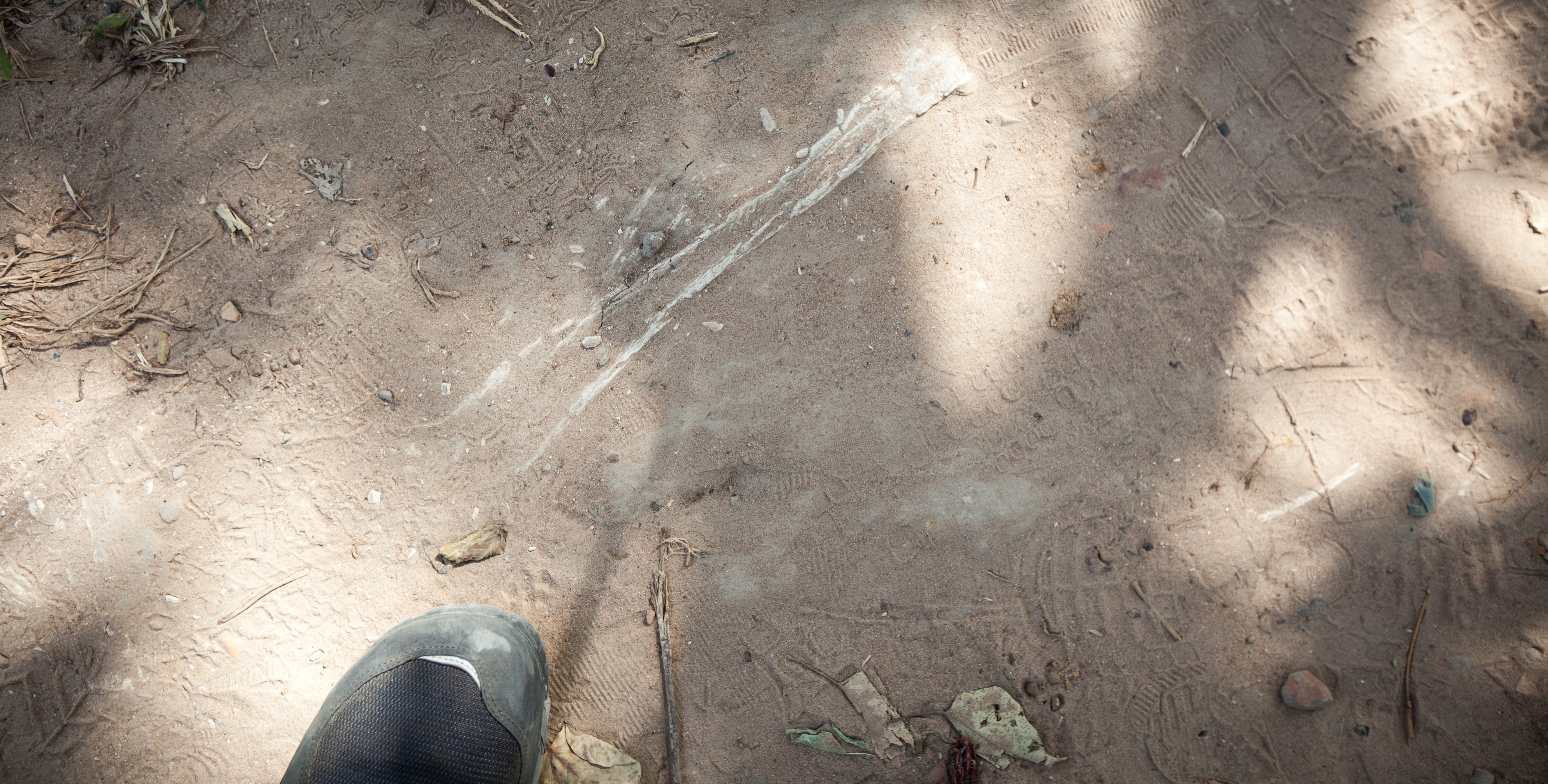
Warning: The post contains some gruesome pictures/details of the Khmer Rogue regime.
On January 4th, I continued my exploration of Phnom Penh. I left my hostel around 9 am and got in one of the tuk-tuks waiting outside. My destination was the Choeung Ek Genocidal Center.
But first, a brief background:
Khmer Rogue was the name given to followers of the Communist Party of Kampuchea in Cambodia. They took power after the Cambodian Civil War and were led by Pol Pot. They were in power from 1975 to 1979.
During this time, the Khmer Rogue arrested and executed anyone connected to the former government as well as intellectuals and professionals. It is estimated that 2.5 million people died as a result of the Khmer Rogue.
Genocide usually refers to the mass killing of people based on ethnicity, but the term certainly applies here.
My driver and I made our way through Phnom Penh, past the downtown district then out on dirt roads. Being a Sunday morning, the traffic wasn’t too bad.
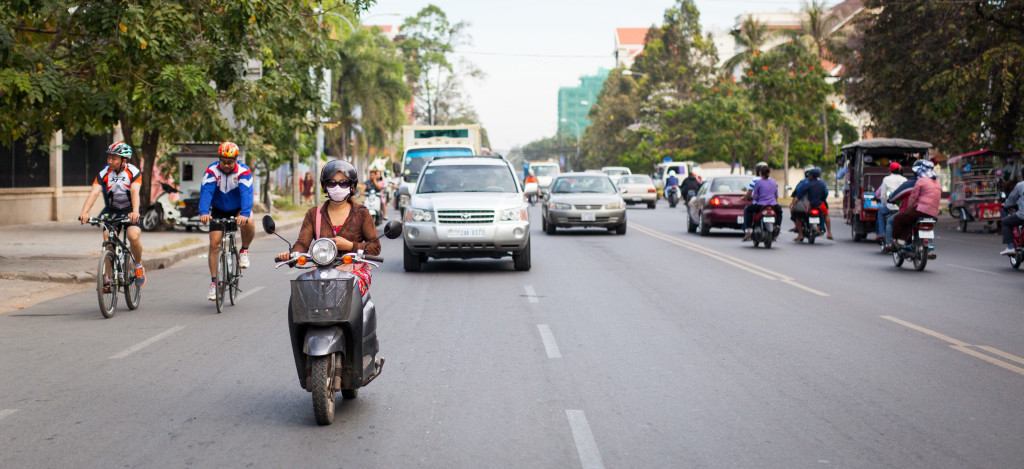
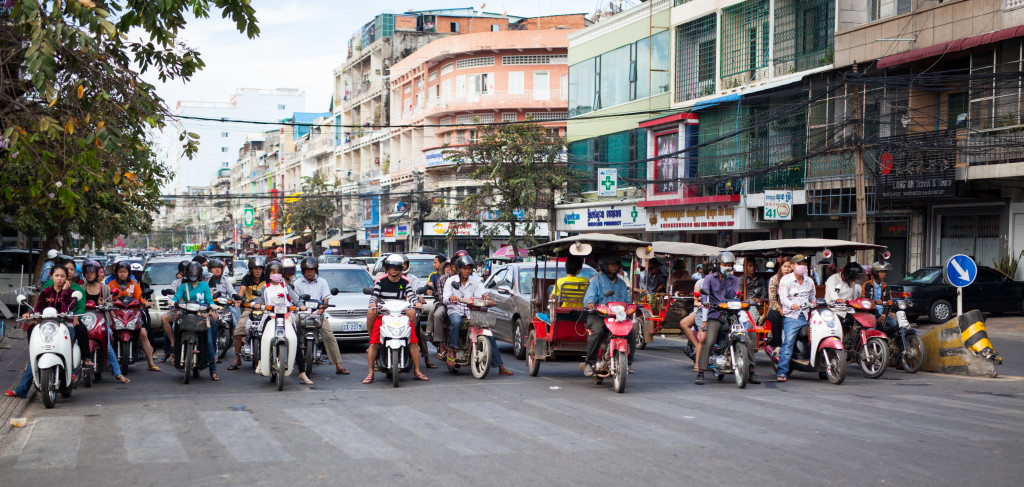
The dust however, was overwhelming. My driver stopped by a road stand and picked up a surgical mask for me.
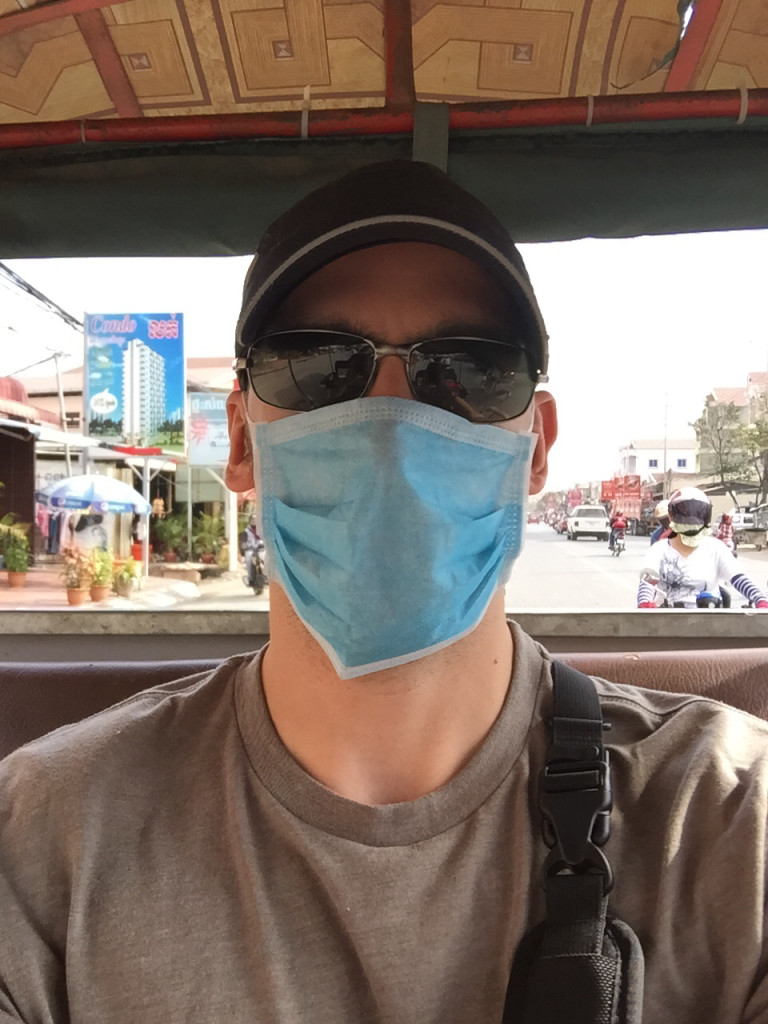
Around 10am we arrived at the Choeung Ek Genocidal Center – commonly known as the Killing Fields. It was here that over a million people were executed less than 35 years ago.
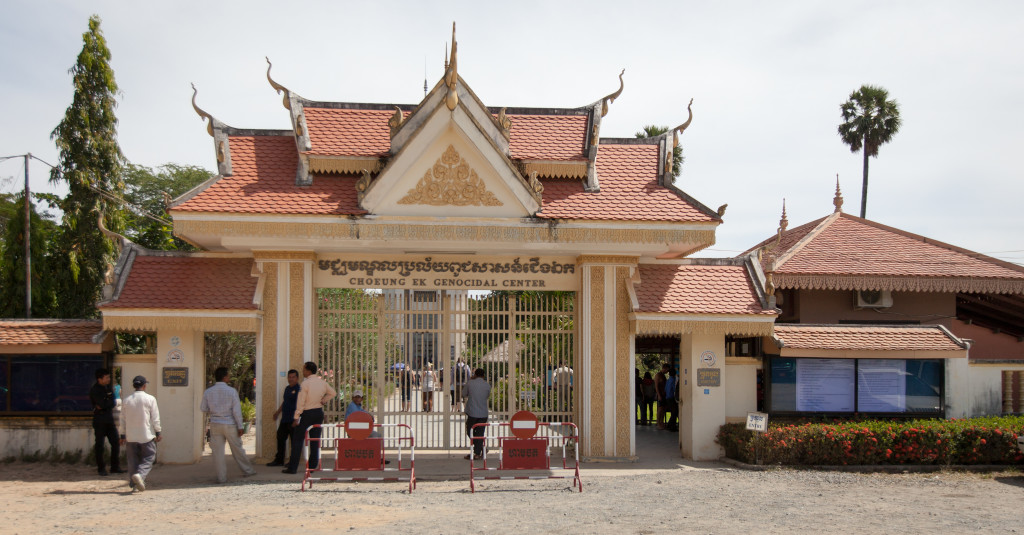
Instead of tour guides, they offered an audio tour. At such a somber place it seems fitting that talking was kept to a minimum. Each station had a number which corresponded to a detailed audio track.
The tour started with the truck stop – a location where prisoners were brought to 2-3 times a day. The victims were taken to be executed in ditches with blunt objects – using everything from crowbars to hammers.
A number of mass graves were located throughout the complex. In the area of maybe 15 ft x 40 ft, bodies were thrown into a pit and covered with a small amount of dirt. A chemical substance was used to mask the smell, but also to kill anyone who was buried alive.
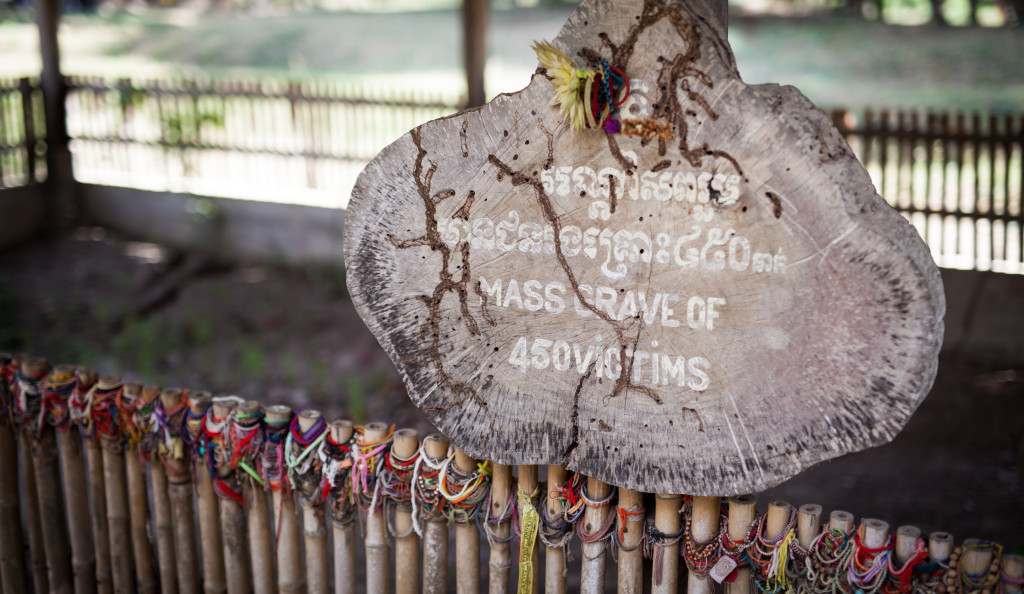
A thatched roof was added to each site to preserve the condition of the bodies.
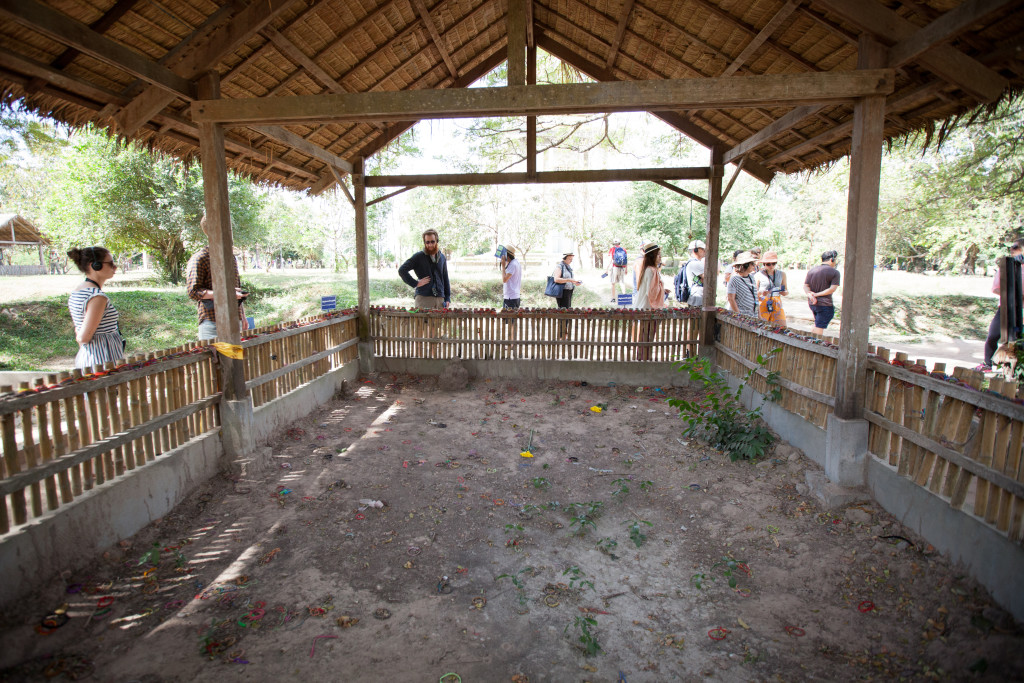
Next to many of the sites were display cases. These housed artifacts of the killings which have appeared over time due to erosion.
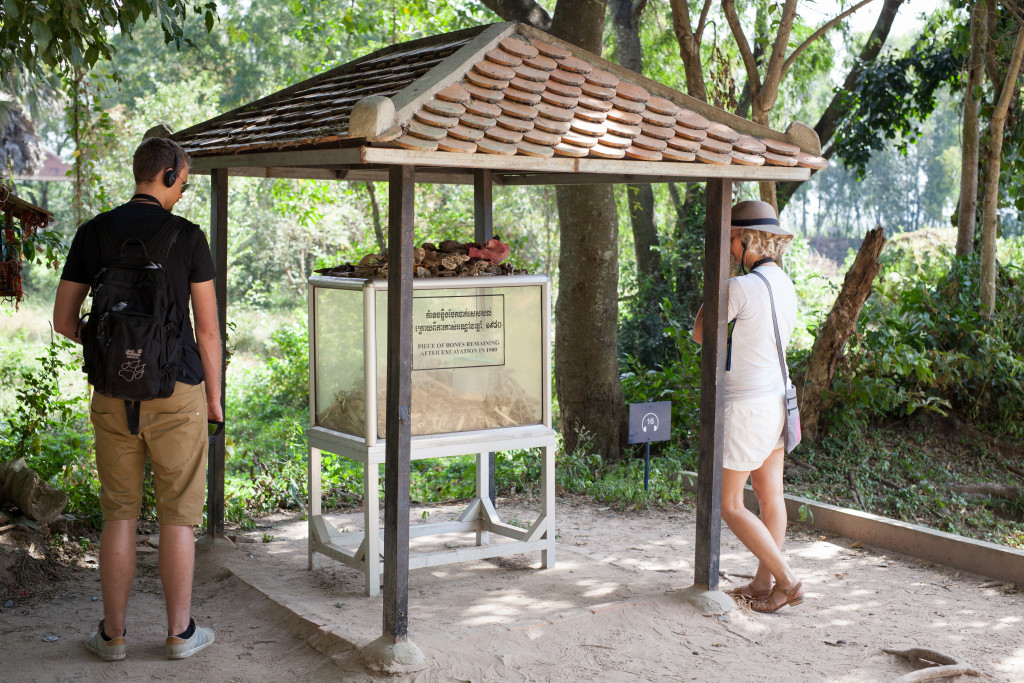
The display cases have not been updated in quite some time, so newly discovered pieces are simply placed on top. Seeing grave sites was disturbing enough, but to see actual human bones and teeth of someone who died there… it was awful.
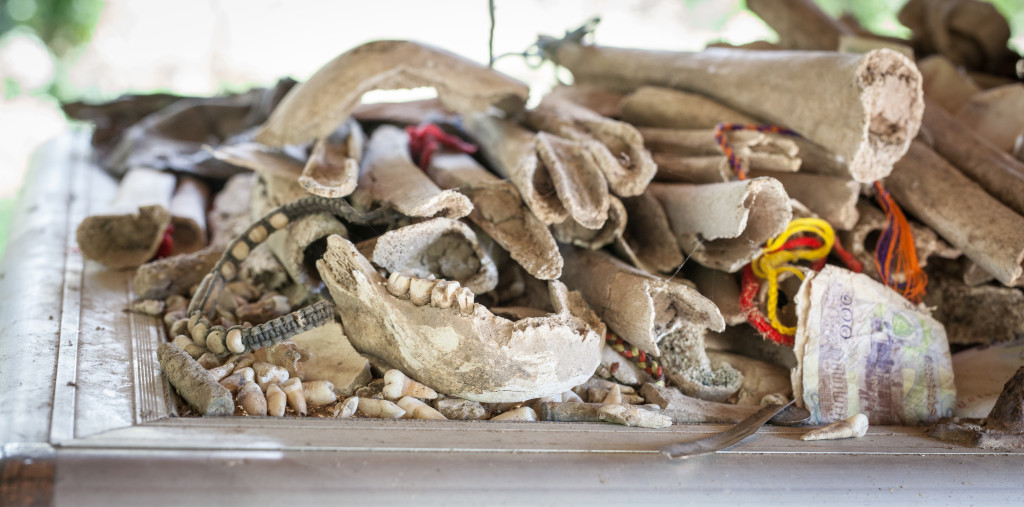
I remember reading in my guidebook that new artifacts will appear after a heavy rain, which isn’t quite correct: new artifacts are on the ground always.
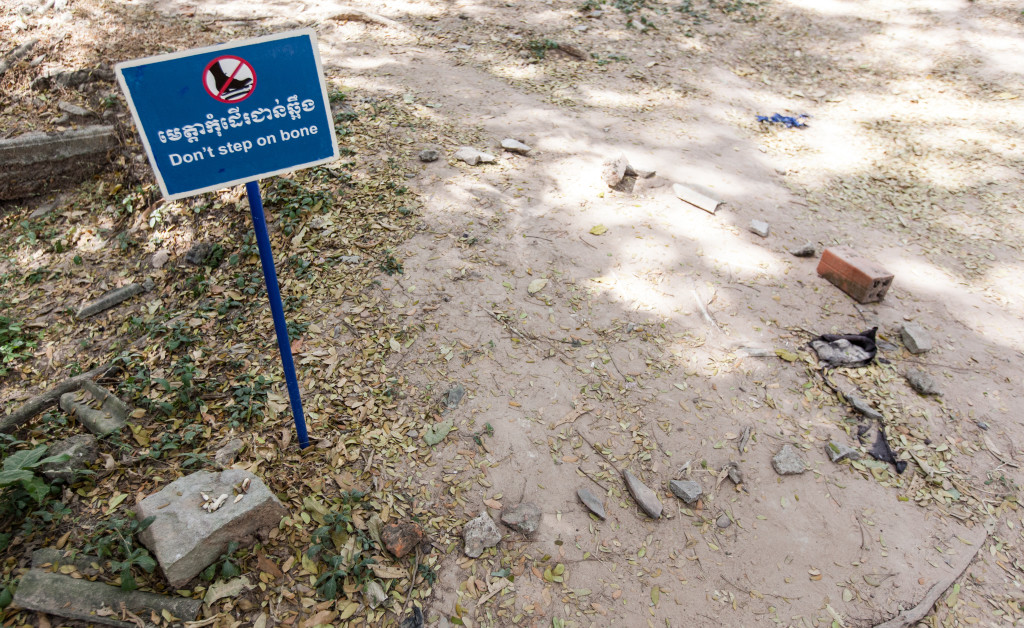
On some paths they aren’t marked off, since they are constantly rising to the surface. Again, stepping over human bones left me in a constant shuddering state.
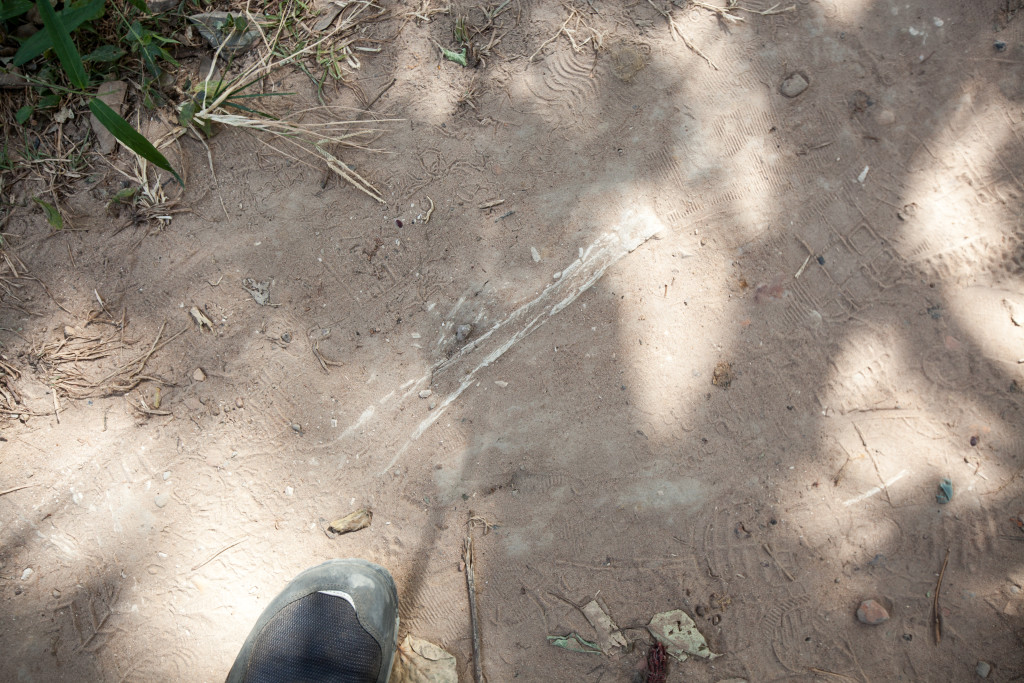
The most disturbing part of the tour was the killing tree. Here infants were grabbed by the legs and thrown against the tree, flung like a baseball bat.
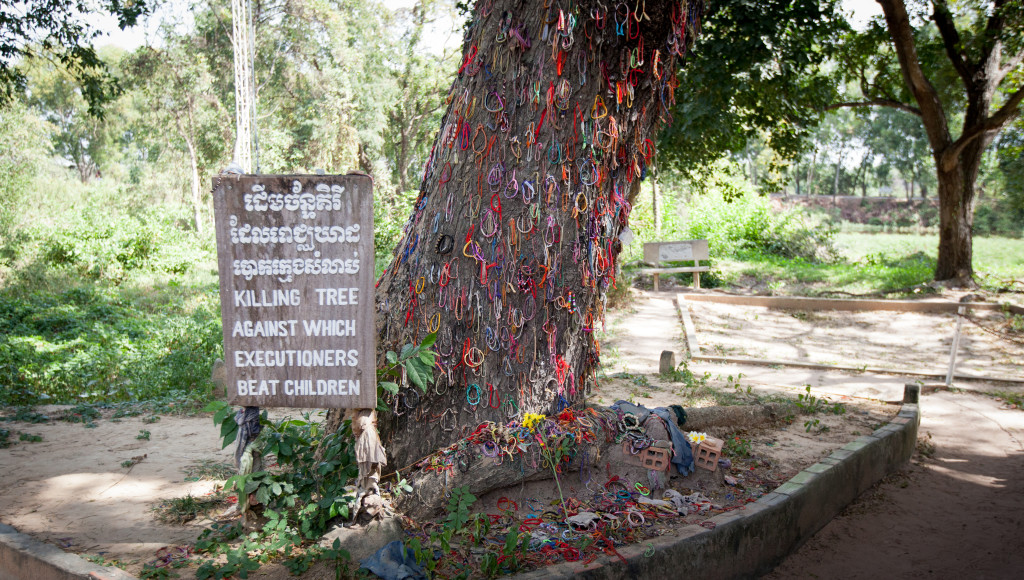
A former guard made these paintings from memory afterwards.
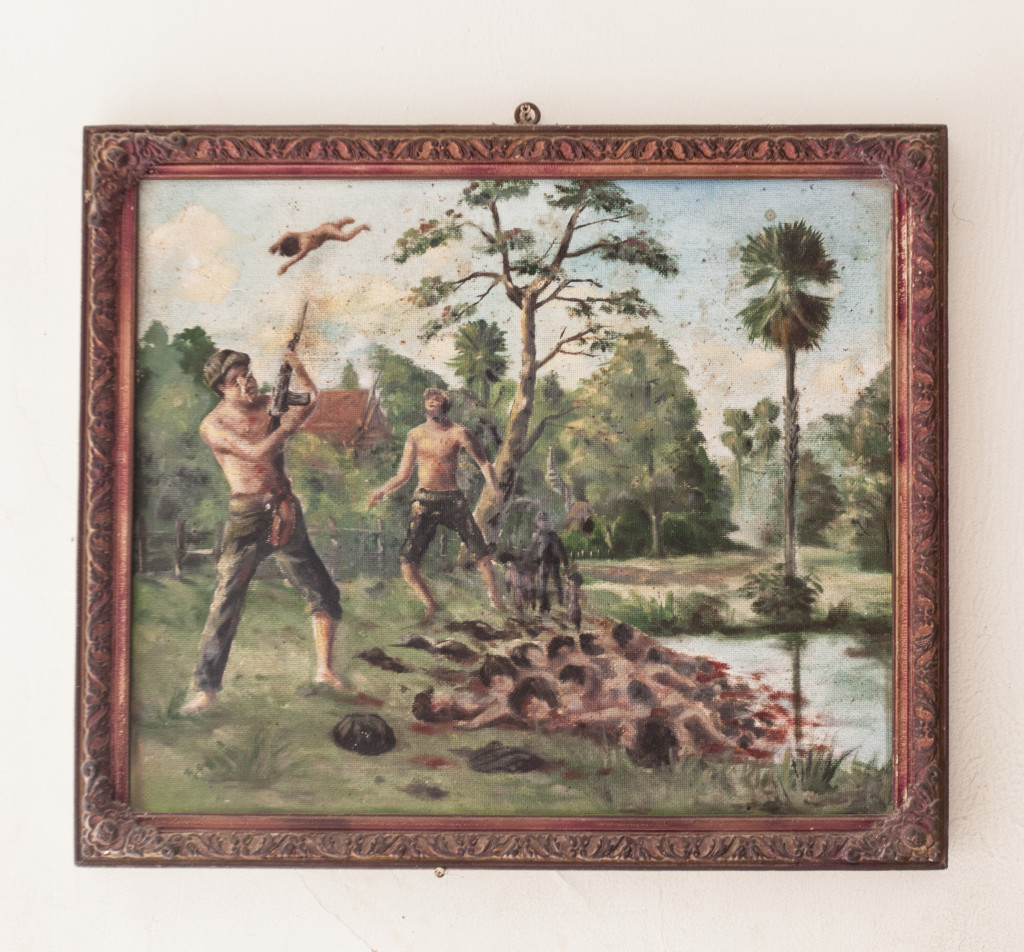
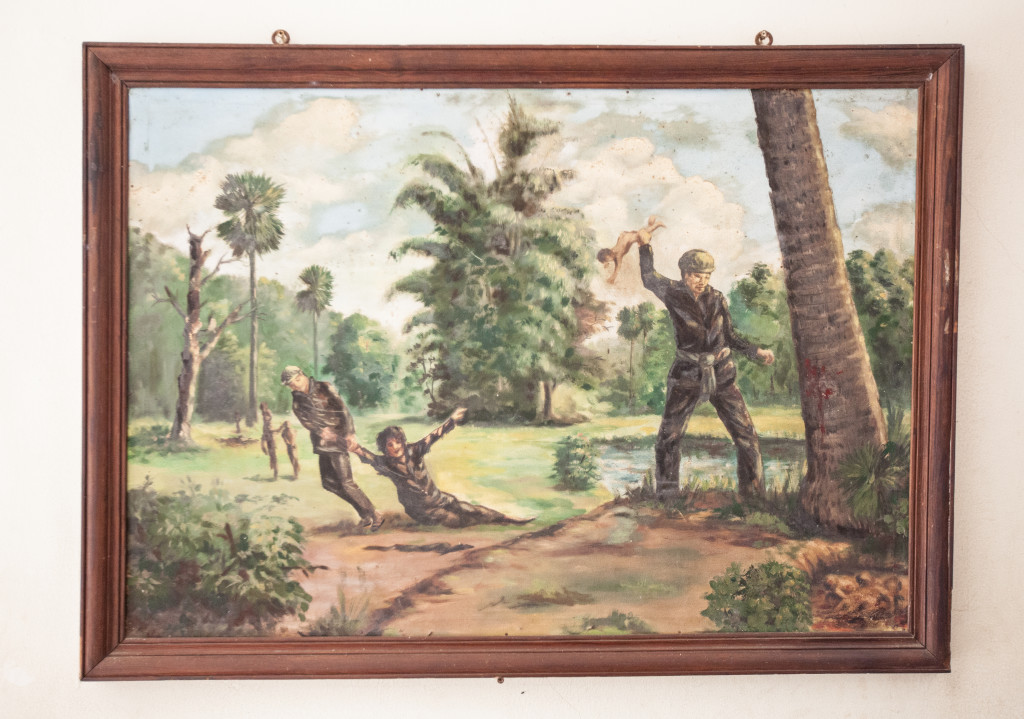
The final stop on the tour was a memorial, marked by a Buddhist stupa. It has glass sides and is filled with over 5,000 human skulls showing varying signs of damage.
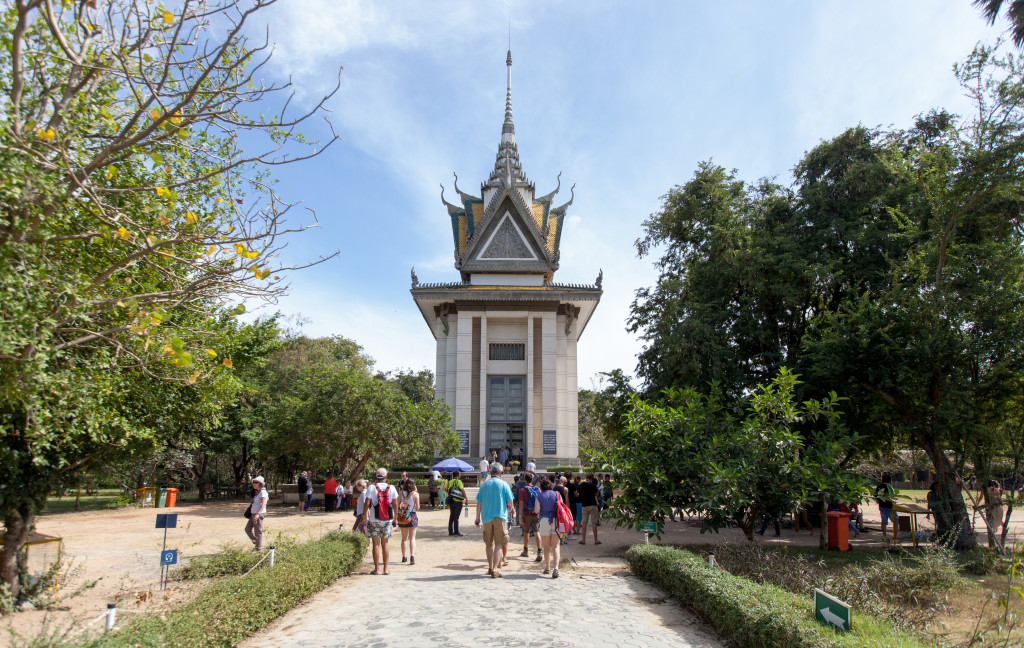
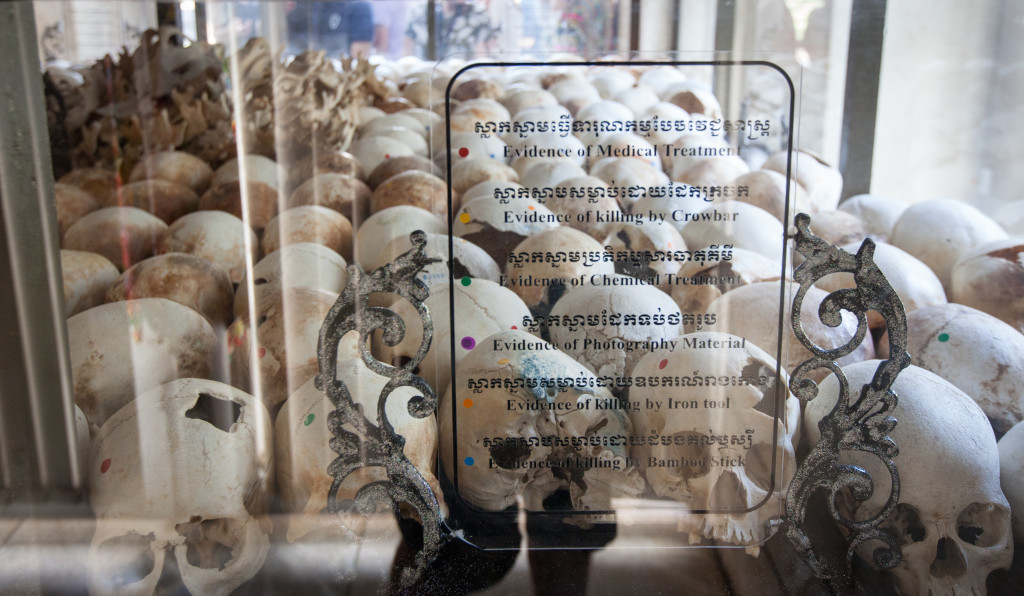
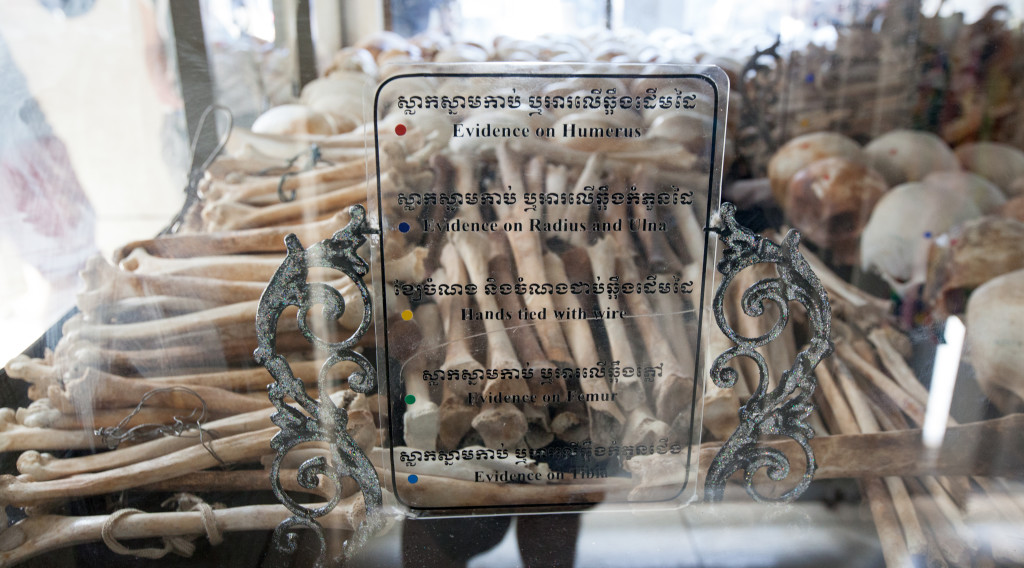

And with that, I completed my tour. The audio portion of the tour was phenomenal and well worth the extra money. I started to draw comparisons to when I visited Auschwitz. The Killing Fields seemed much more… tangible. Can’t think of any other way to describe it. And it’s basically unknown in the United States.
Most people who visit Thailand skip over Cambodia. And of those who do visit, likely only visit Angkor Wat on an organized tour. But Phnom Penh was well worth the extra couple days. The Killing Fields at Choeung Ek Genocidal Center isn’t a joyous experience, but it’s one you’d never forget.